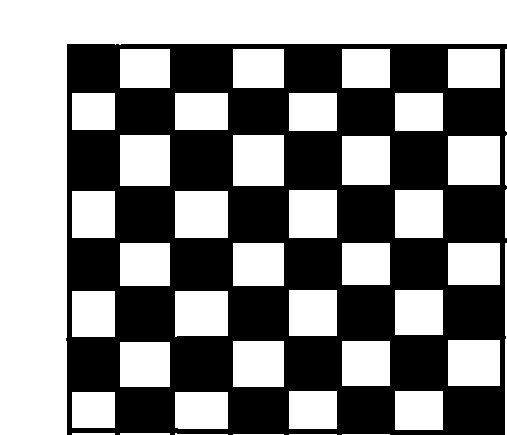
The inventor of the chess board suggested a reward of one gram of wheat for the first square, 2 grains for the second, 4 grains for the third and so on, doubling the number of the grains in subsequent squares. How many grains would be given to investors? (There are 64 squares in the chess board).
Answer
590.1k+ views
Hint – In this question use the fact that the number of grains that is to be distributed to the investors forms a series of the form 1, 2, 4, 8, 16,........................., 64th term so it depicts an geometric progression where the first term is 1 and the common ratio is 2. Use the sum of n terms of a G.P that is $S = a\left( {\dfrac{{{r^n} - 1}}{{r - 1}}} \right)$. This will help approaching the problem.
Complete step-by-step answer:

The inventor of the chess board suggested a reward of 1 grain of wheat for the first square, 2 grains for the second square, 4 grains for the third square and so on, doubling the number of the grains for the subsequent squares.
There are 64 squares in the chess board.
Now we have to find out the total number of grains would be given to the investor.
The number of grains is in the form of
1, 2, 4, 8, 16 ,........................., 64th term
Now as we see that the first term a = 1,
And the common ratio, r = $\dfrac{2}{1} = \dfrac{4}{2} = \dfrac{8}{4} = 2$
So as we see that the common ratio is 2 and constant so the above aeries is a geometric progression so the sum of the G.P is given as
$ \Rightarrow S = a\left( {\dfrac{{{r^n} - 1}}{{r - 1}}} \right)$
Where, S = sum of the G.P series
a = first term of the series
r = common ratio of the series
n = number of terms in the series
The total number of grains is equal to
1 + 2 + 4 + 8 + 16 +......................+64th term.
Therefore, $S = 1\left( {\dfrac{{{2^{64}} - 1}}{{2 - 1}}} \right) = {2^{64}} - 1$
So this is the required number of grains that the inventor received.
So this is the required answer.
Note – A series is said to be in geometric progression if any only if the common ratio that is the ratio of the consecutive terms of the series remains constant throughout the series. There is a reason that why we have used the series sum formula as $S = a\left( {\dfrac{{{r^n} - 1}}{{r - 1}}} \right)$ and not $S = a\left( {\dfrac{{1 - {r^n}}}{{1 - r}}} \right)$ this is because in this case the common ratio is greater than 1 , the later formula is used if and only if when the common ratio is less than 1.
Complete step-by-step answer:

The inventor of the chess board suggested a reward of 1 grain of wheat for the first square, 2 grains for the second square, 4 grains for the third square and so on, doubling the number of the grains for the subsequent squares.
There are 64 squares in the chess board.
Now we have to find out the total number of grains would be given to the investor.
The number of grains is in the form of
1, 2, 4, 8, 16 ,........................., 64th term
Now as we see that the first term a = 1,
And the common ratio, r = $\dfrac{2}{1} = \dfrac{4}{2} = \dfrac{8}{4} = 2$
So as we see that the common ratio is 2 and constant so the above aeries is a geometric progression so the sum of the G.P is given as
$ \Rightarrow S = a\left( {\dfrac{{{r^n} - 1}}{{r - 1}}} \right)$
Where, S = sum of the G.P series
a = first term of the series
r = common ratio of the series
n = number of terms in the series
The total number of grains is equal to
1 + 2 + 4 + 8 + 16 +......................+64th term.
Therefore, $S = 1\left( {\dfrac{{{2^{64}} - 1}}{{2 - 1}}} \right) = {2^{64}} - 1$
So this is the required number of grains that the inventor received.
So this is the required answer.
Note – A series is said to be in geometric progression if any only if the common ratio that is the ratio of the consecutive terms of the series remains constant throughout the series. There is a reason that why we have used the series sum formula as $S = a\left( {\dfrac{{{r^n} - 1}}{{r - 1}}} \right)$ and not $S = a\left( {\dfrac{{1 - {r^n}}}{{1 - r}}} \right)$ this is because in this case the common ratio is greater than 1 , the later formula is used if and only if when the common ratio is less than 1.
Recently Updated Pages
Master Class 11 Economics: Engaging Questions & Answers for Success

Master Class 11 English: Engaging Questions & Answers for Success

Master Class 11 Social Science: Engaging Questions & Answers for Success

Master Class 11 Biology: Engaging Questions & Answers for Success

Class 11 Question and Answer - Your Ultimate Solutions Guide

Master Class 11 Business Studies: Engaging Questions & Answers for Success

Trending doubts
What is meant by exothermic and endothermic reactions class 11 chemistry CBSE

10 examples of friction in our daily life

One Metric ton is equal to kg A 10000 B 1000 C 100 class 11 physics CBSE

Difference Between Prokaryotic Cells and Eukaryotic Cells

What are Quantum numbers Explain the quantum number class 11 chemistry CBSE

1 Quintal is equal to a 110 kg b 10 kg c 100kg d 1000 class 11 physics CBSE




